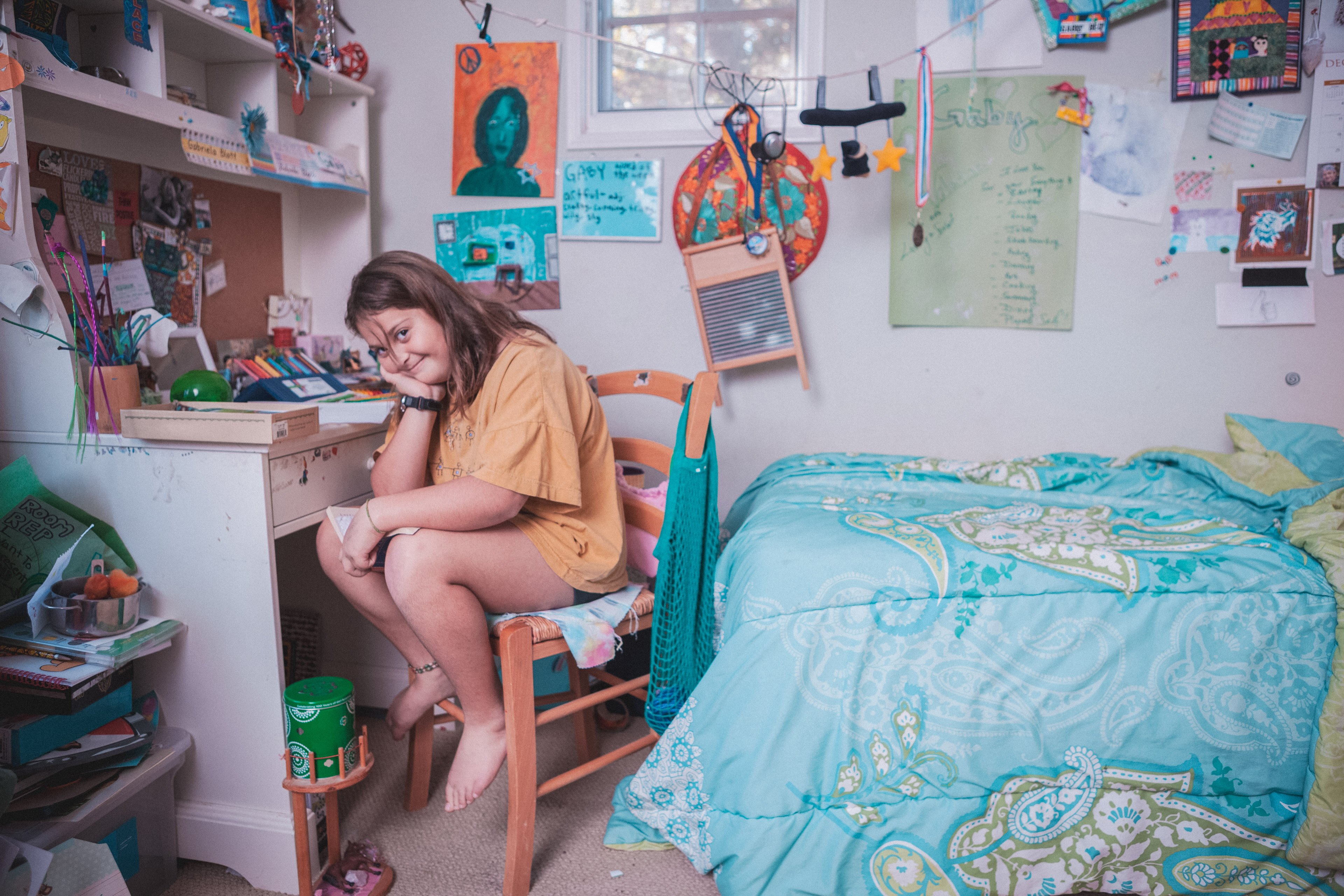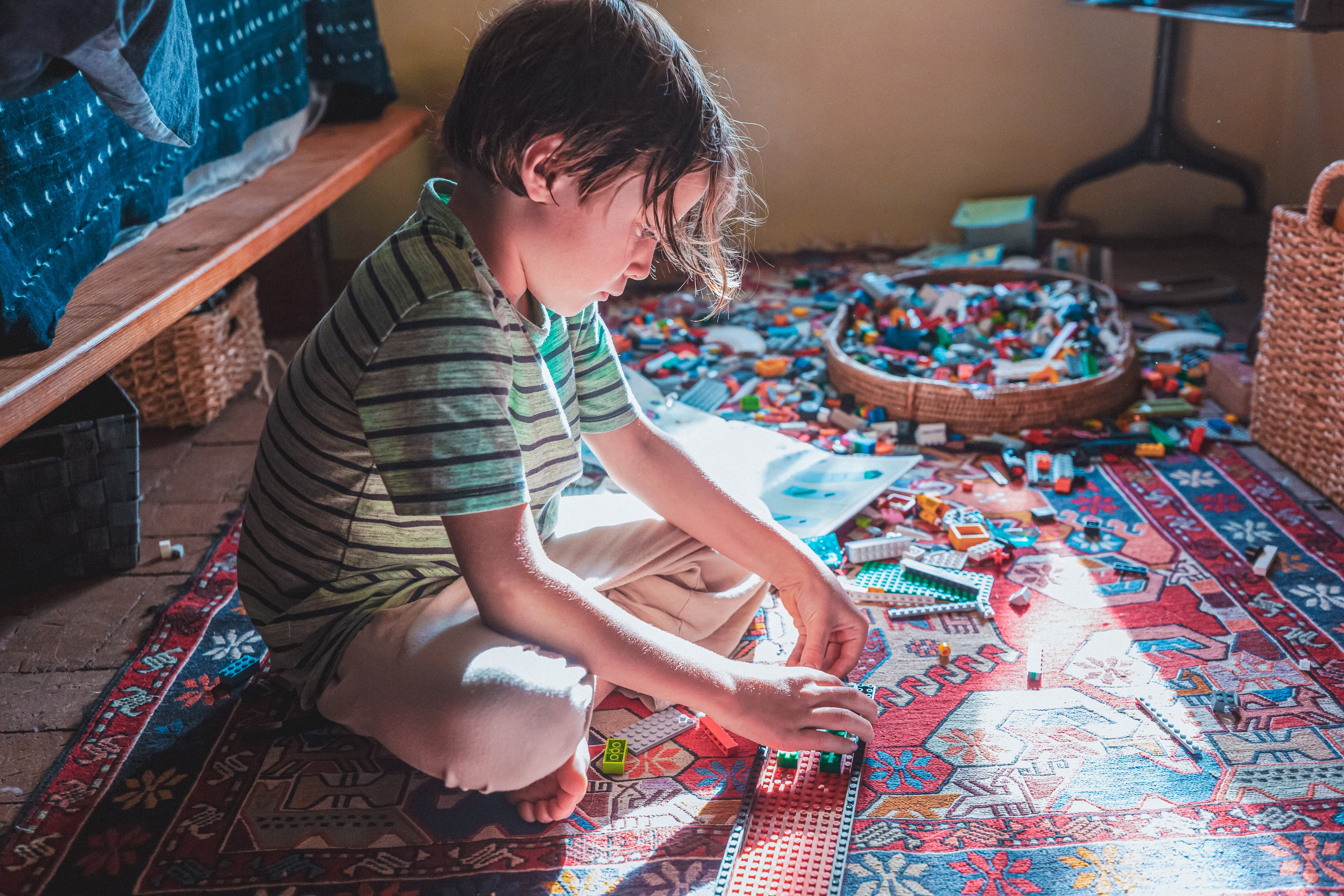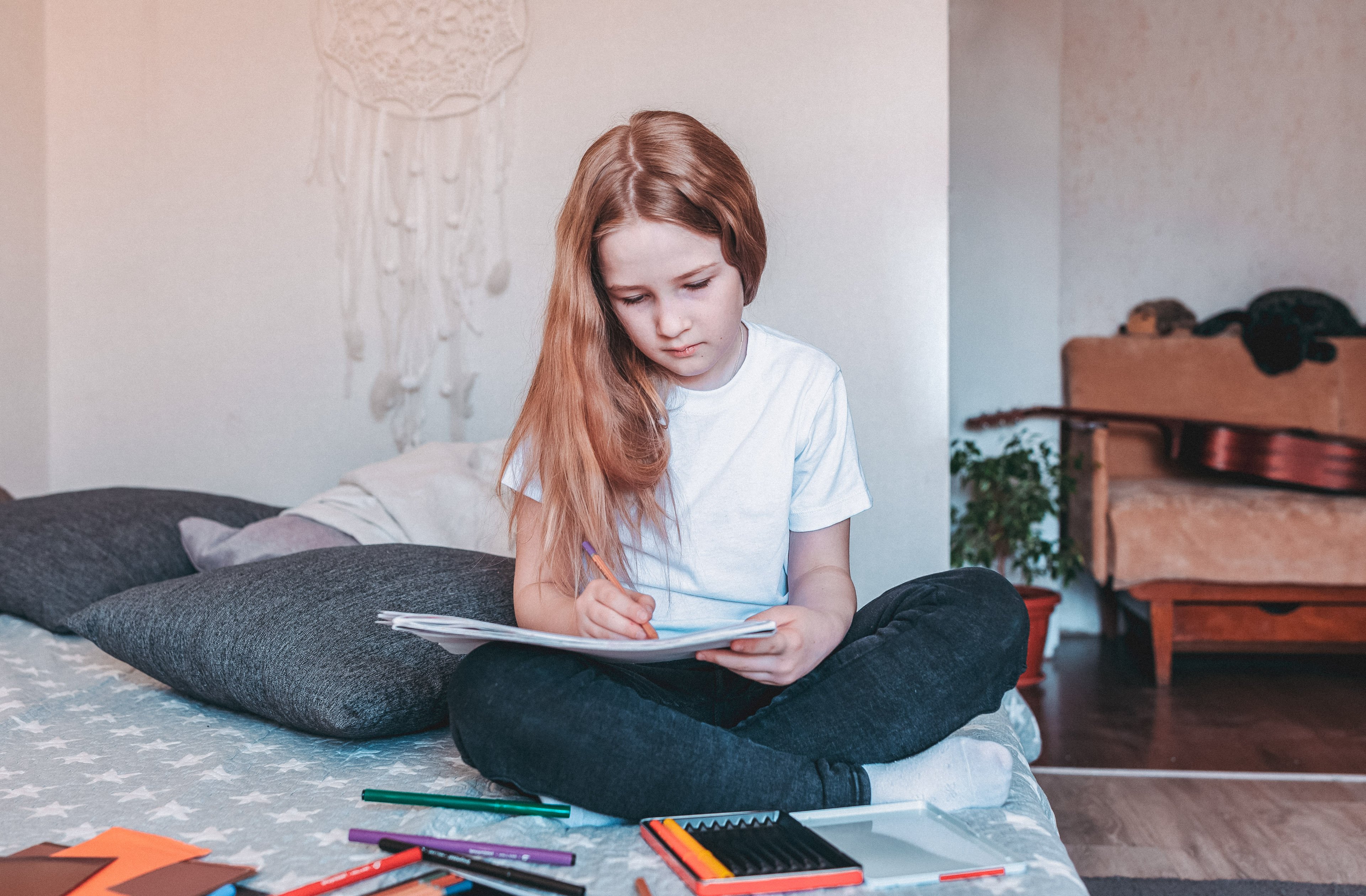ADHD and Messiness: Understanding the Link & Practical Strategies
Discover practical strategies to manage messiness associated with ADHD. Learn effective tips for improvement and create a more organized life.



Are you having trouble getting your child to clean up their dirty room? You’re not the only one. A lot of kids with ADHD are more likely to be disorganized than other kids. These problems can affect many parts of their lives and can lead to increased stess. Find out why this is the case and how you can assist.
Key takeaways
- Problems with executive functioning are a strong contributor to disorganization and clutter in people with ADHD.
- These challenges contribute to disorganization and clutter, which can become overwhelming.
- To deal with clutter, you can break big jobs into smaller ones, use simple storage solutions, and use good time management tools.
- Being patient, persistent, and seeking help when needed can help your child change their mindset.
ADHD and messiness: What’s the link?
Children with ADHD often struggle with executive functioning, making it more difficult to get things done, including cleaning their room or keeping shared spaces tidy.
Here are some factors that contribute to messiness in people with ADHD.

Executive dysfunction
Executive function is what helps us regulate and plan tasks. When a child has deficits in this area, it impacts their ability to start (and finish) tasks, keep track of time, and stay organized. This is why kids with ADHD may struggle so much with even getting started on clearing their room. They may have difficulty with impulse control, leaving tasks half-finished to go play with a toy. Or they may not even start them at all. This leads to cluttered, messy spaces.
Time blindness
Children with ADHD often struggle with keeping track of time. This is known as "time blindness".
Kids with ADHD typically have trouble figuring out how long something will take, including cleaning up.
This can make it hard to plan and finish tasks, like cleaning their room, within a reasonable timeframe.
Emotional factors & the shame cycle
Kids with ADHD can get stuck in a cycle of shame, especially if they have trouble cleaning up all the time. The guilt they experience from past failures makes them less motivated and less likely to want to try again in the future.
The impact of messiness on daily life
People with ADHD often have significant problems with staying organized. Struggling with clutter and messiness can impact your child’s life in many ways.
Academic problems
Missing homework assignments due to a messy room or backpack can affect their grades. When a child’s backpack is not organized, important papers may be lying at the bottom, crumpled up. Over time, these issues can lead to problems with keeping up at school.
Self-esteem & emotional well-being
Disorganization can cause embarrassment for kids with ADHD, lower feelings of self-confidence, and affect their mood. Over time, this can also contribute to a negative self-image.
Mindset shifts for managing ADHD messiness
Don't forget that how well your child cleans and is organized has nothing to do with how "good" they are. A messy room isn’t a result of disrespect or laziness. It’s because of ADHD. If your child has trouble staying organized, don't make them feel bad or ashamed.
Replace negative mindsets that make your child feel bad about themselves. Instead of: “Why can’t you just clean up like your brother?” try “You’re having a hard time getting started. Let me help you begin.”
These mindset shifts can go a long way towards helping your child feel capable and confident.
Remember: their space does not have to be aesthetically pleasing, but it should be safe and functional. Keeping this in mind can help you keep things in perspective.
Hacks to help kids reduce clutter

Simply telling your kid to "clean their room" isn't enough guidance if they have weak executive functioning skills and ADHD.
Be specific
If you just tell your child to clean their room, they may feel overwhelmed by the vague instructions. Instead, be direct and tell them exactly what you’d like them to do (such as put away their laundry, put toys back where they belong, or put books back on the bookshelf). Break your directions down into bite-sized pieces so their tasks are much more manageable.
The one-touch rule
Teach your child to only pick up each item one time and put it away immediately. It could take some time to get used to, but once they do, this is a simple habit to keep things neat. For example, coloring books go onto their bookshelf, dirty socks go into the hamper, and so on. Immediate action prevents clutter and procrastination since they won't set the item down and forget about it or move it around many times.
Designated "homes" & drop zones
Labelling bins and placing trays in entryways establishes "homes" for belongings. Being able to see where things go makes tidying up simple. It also decreases stress associated with cleaning and helps them stay accountable.
Accessible tools
Store supplies and things your child uses often (like crayons, clothes, and favorite toys) in clear, open containers to prevent them from throwing everything out of bins when looking for a favorite item. Make sure to keep these bins within easy reach. Baskets that can slide into partitioned cubbies also help.
Actionable cleaning and organization strategies
Over time, clutter accumulates. Here are several ways to help your child build habits that will help them stay organized over time.
The 5-minute rule
Set a timer for five minutes and have your child try to do as much cleaning as possible within that time frame. This also works to keep clutter at bay if you practice this hack daily.
Habit stacking
Another useful hack is habit stacking. Teach your child how to attach a small cleaning habit to something they already do daily. An example may be wiping down their sink while brushing their teeth or placing their pajamas in the hamper when they get out of bed in the morning.
Body doubling
As a parent, your presence is powerful, even as your child tidies up. By remaining present, you can encourage their efforts as they straighten up and organize. You can also gently keep them on task if they get distracted.
Gamification
Another way to keep your kid motivated is to gamify tidying up. For example, you could have a clean-up race (this works well with multiple kids) or use a timer to see how much they can clean up within a certain time frame. If they finish cleaning within that designated time, you could reward them with a sticker or prize.
Task-breaking & scheduling
Sometimes, creating a chart showing each step of the clean-up process is the best way to keep kids with ADHD on track. Create a step-by-step guide detailing what needs to be done. You could also break these tasks into time frame increments. For instance, you could ask them to spend 15 minutes a day cleaning up a small area of their room, like a closet, bookcase, or under their bed. Small, simple tasks are easier to manage, and your child can move through one task at a time.
Professional support & resources
Many parents and children with ADHD benefit from additional support to help them overcome executive functioning deficits. This support includes coaching, occupational therapy, and talk therapy.
Occupational therapy & ADHD coaching
Teaching your kid how to cope with ADHD challenges can be hard for parents, and you don’t have to do it alone. ADHD coaching can help ADHD kids rise above challenges with executive functioning. Occupational therapists can also teach them how to break down larger tasks into smaller, easier ones. By helping children master these abilities, they can create routines to help build healthy habits and decrease stress.
Therapy for kids & teens
Therapy (whether in-person or online) is a helpful way for kids with ADHD to learn skills to overcome challenges related to executive dysfunction.
Child therapists can use specialized techniques to teach kids how to simplify tasks and create personalized organization systems to stay tidy.
They assist you and your child in finding solutions that work.

How Emora Health can help
When ADHD makes it hard for your child to stay organized and manage daily life, finding the right support matters, and Emora Health can help. You can begin care in as little as two days with one of our highly vetted child therapists who specialize in working with ADHD kids. Start your child's journey to better mental health today.
Frequently Asked Questions
Messiness may be a sign of ADHD, but it isn’t always. Chronic messiness may occur due to executive dysfunction.
Cleaning requires many small (or "micro") decisions. There is also a low dopamine reward associated with cleaning. They may also remember past failures and feel as though it's not worth trying if they can't do a perfect job.
Shift your mindset from "all-or-nothing" to "good enough." Hacks like the "one-touch rule" and drop zones for everyday items can make cleaning tasks more manageable. Five-minute speed cleaning rounds, having someone else present with your child while they clean, and turning it into a game can also help.
It doesn't get worse, but symptoms can shift from overt hyperactivity to internal restlessness. As your life demands get larger, other conditions can develop (like depression or anxiety), which can make organization even harder.
- Kofler, M. J., Sarver, D. E., Harmon, S. L., Moltisanti, A., Aduen, P. A., Soto, E. F., & Ferretti, N. (2018). Working memory and organizational skills problems in ADHD. Journal of Child Psychology and Psychiatry, 59(1), 57–67. https://doi.org/10.1111/jcpp.12773
- Tepper, D. L., Howell, T. J., & Bennett, P. C. (2023). Executive functions and household chores: Does engagement in chores predict children’s cognition? Frontiers in Psychology, 14, Article 1134567. https://pmc.ncbi.nlm.nih.gov/articles/PMC9796572/
- Silverstein, M. J., Faraone, S. V., Leon, T. L., Biederman, J., Spencer, T. J., & Adler, L. A. (2020). The relationship between executive function deficits and DSM-5–defined ADHD symptoms. Journal of Attention Disorders, 24(1), 41–51. https://doi.org/10.1177/1087054718804347
- Noreika, V., Falter, C. M., & Rubia, K. (2013). Timing deficits in attention-deficit/hyperactivity disorder (ADHD): Evidence from neurocognitive and neuroimaging studies. Neuropsychologia, 51(2), 235–266. https://doi.org/10.1016/j.neuropsychologia.2012.09.036
- Roselló, B., Berenguer, C., Baixauli, I., Mira, A., Martínez-Raga, J., & Miranda, A. (2020). Empirical examination of executive functioning, ADHD associated behaviors, and functional impairments in adults with persistent ADHD, remittent ADHD, and without ADHD. BMC Psychiatry, 20(1), 134. https://doi.org/10.1186/s12888-020-02542-y
- Saxbe, D. E., & Repetti, R. (2010). No place like home: Home tours correlate with daily patterns of mood and cortisol. Personality and Social Psychology Bulletin, 36(1), 71–81. https://doi.org/10.1177/0146167209352864
- Kofler, M. J., Sarver, D. E., Harmon, S. L., Moltisanti, A., Aduen, P. A., Soto, E. F., & Ferretti, N. (2017). Working memory and organizational skills problems in ADHD. Journal of Child Psychology and Psychiatry, 58(10), 1109-1117. https://doi.org/10.1111/jcpp.12773
